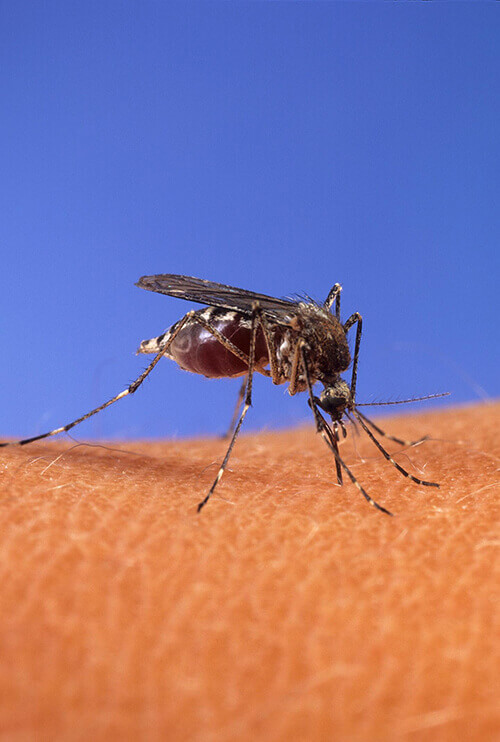



Business Inquiry
Global:
Email:marketing@medicilon.com
+1(781)535-1428(U.S.)
0044 7790 816 954 (Europe)
China:
Email: marketing@medicilon.com.cn
Tel: +86 (21) 5859-1500



Mosquitoes are considered to be the deadliest animal on the planet, as the viral and parasitic infections they carry and spread have inflicted a tremendous burden on human morbidity and mortality. While many of these mosquito-borne infections have very diverse pathologies, they share a commonality in the mosquitoes themselves.

For instance, the mosquito Aedes aegypti, which can spread dengue fever, chikungunya, Zika fever, and yellow fever virus, requires a blood meal to develop eggs. One way to control the spread of these diseases is to tamper with the reproductive events that follow this mosquito’s blood meal.
Now, a team of scientists at the University of California, Riverside has just published data that describes how they have targeted mosquito egg maturation at the molecular level, focusing on small regulatory RNA molecules, called microRNAs (miRNAs). The findings from this study were published recently in the Proceedings of the National Academy of Science in an article entitled “Transcriptome-Wide MicroRNA and Target Dynamics in the Fat Body during the Gonadotrophic Cycle of Aedes aegypti.”
The UC Riverside team studied miRNA expression in the A. aegypti fat body—a metabolic center that plays a key role in reproduction. Since proper functioning of the fat body is essential for the development of the female reproductive system after a blood meal, identifying which miRNAs are important to fat body functions, and what specific genes they target, can help design ways to manipulate the levels of miRNA or their targets, affect their interactions, disrupt mosquito reproduction, and thus prevent the spread of diseases the mosquitoes transmit. Interestingly, the investigators observed five major miRNA expression peaks within a 48-hour period following the female mosquito’s blood meal.
“What we observed is that the levels of many miRNAs change significantly throughout the 48-hour period following a blood meal, indicating that these miRNAs, in turn, may be establishing significant changes in expression of key genes during this time in the fat body,” explained co-senior study investigator Fedor Karginov, Ph.D., assistant professor of cell biology and neuroscience at UC Riverside. “Our work has given us a much-needed picture of which miRNAs are abundant in the fat body tissue, how each miRNA subgroup changes over time, and we have confirmation that specific up- and downregulation of miRNA levels takes place during egg development.”
Dr. Karginov and his colleagues measured the levels of all miRNAs in the fat body (roughly 100 different miRNAs) at five points of time, starting just before mosquitos take a blood meal, and then 6, 24, 36, and 48 hours after the blood meal. The timing of these was chosen based on previously known information on the timing of major physiological changes—or milestones—in the fat body after a blood meal.
Interestingly the researchers found that each miRNA, together with a partner protein called Argonaute or “Ago,” binds to (or “targets”) several messenger RNA (mRNA) molecules, and thus downregulates the expression of the corresponding genes. Determining the targets of important miRNAs is crucial to uncover the regulatory gene networks that drive the physiological changes in the fat body after a blood meal.
Additionally, the researchers identified the binding sites for Ago/miRNAs on mRNAs within the fat body. They performed this identification at two points of time to study any changes that may have occurred with a high-throughput RNA sequencing technique using cross-linking immunopreciptation called “CLIP-seq,” which provides a large trove of potential miRNA–mRNA interactions for further investigation.
“The CLIP-seq data has given us insight into which genes the miRNAs target, providing a solid foundation for future studies of miRNA regulation during the egg production cycle,” noted co-senior study investigator Alexander Raikhel, Ph.D., distinguished professor of entomology at UC Riverside. “Now that we know these genes, we are a step closer to controlling the spread of A. aegypti by disrupting a key process in the reproductive cycle—egg production.”
 Relevant
news
Relevant
news